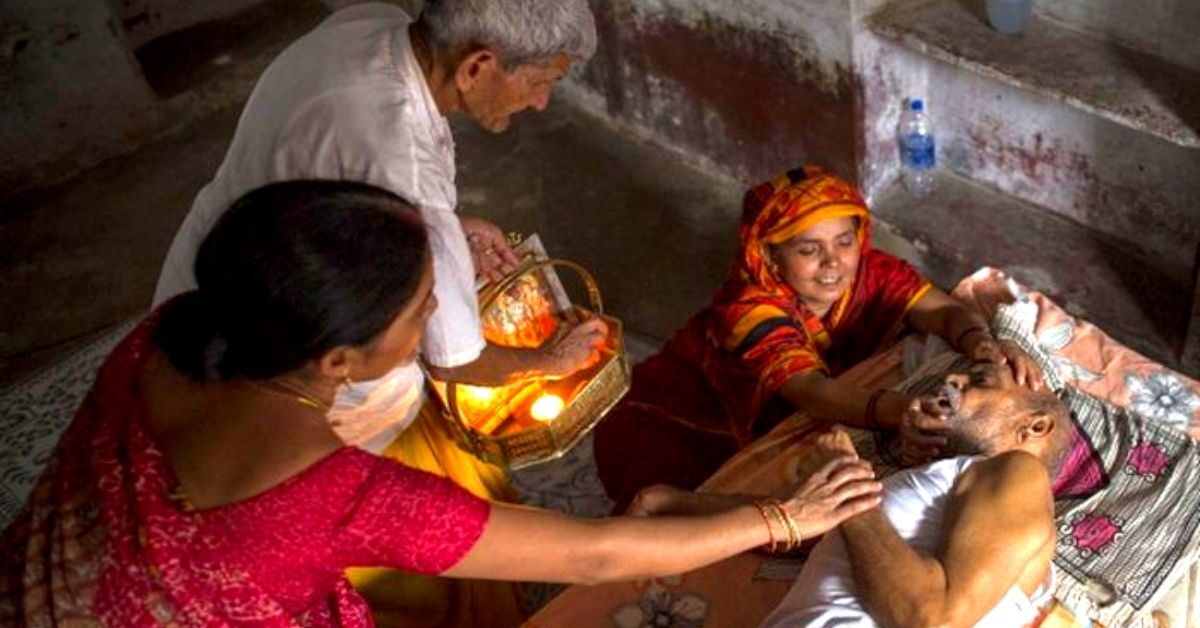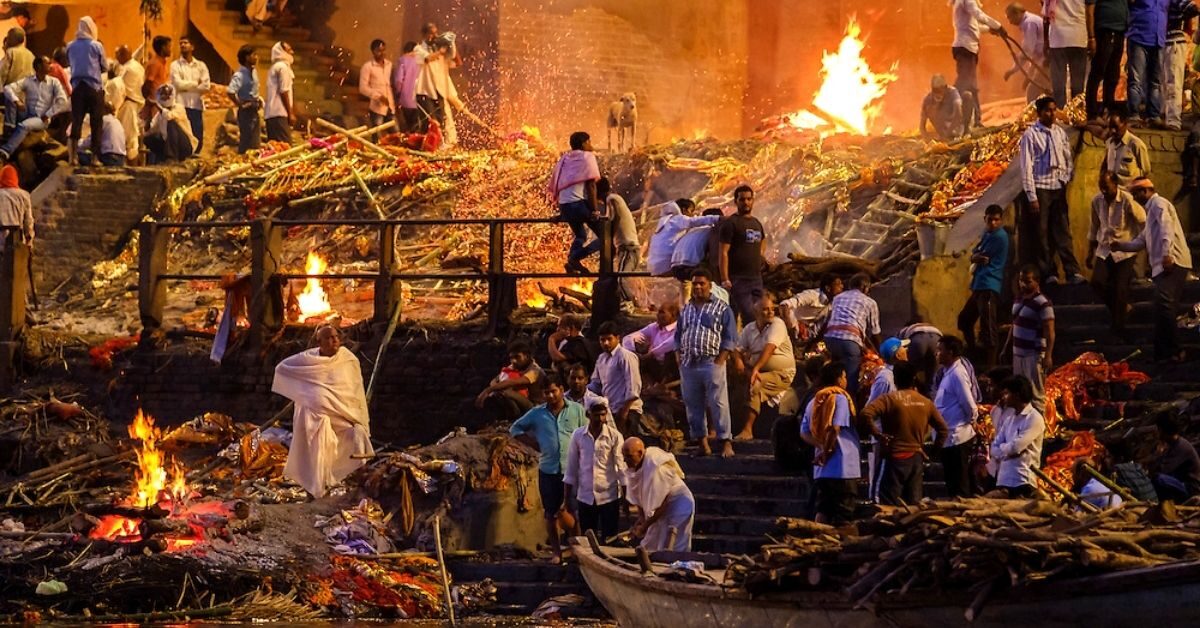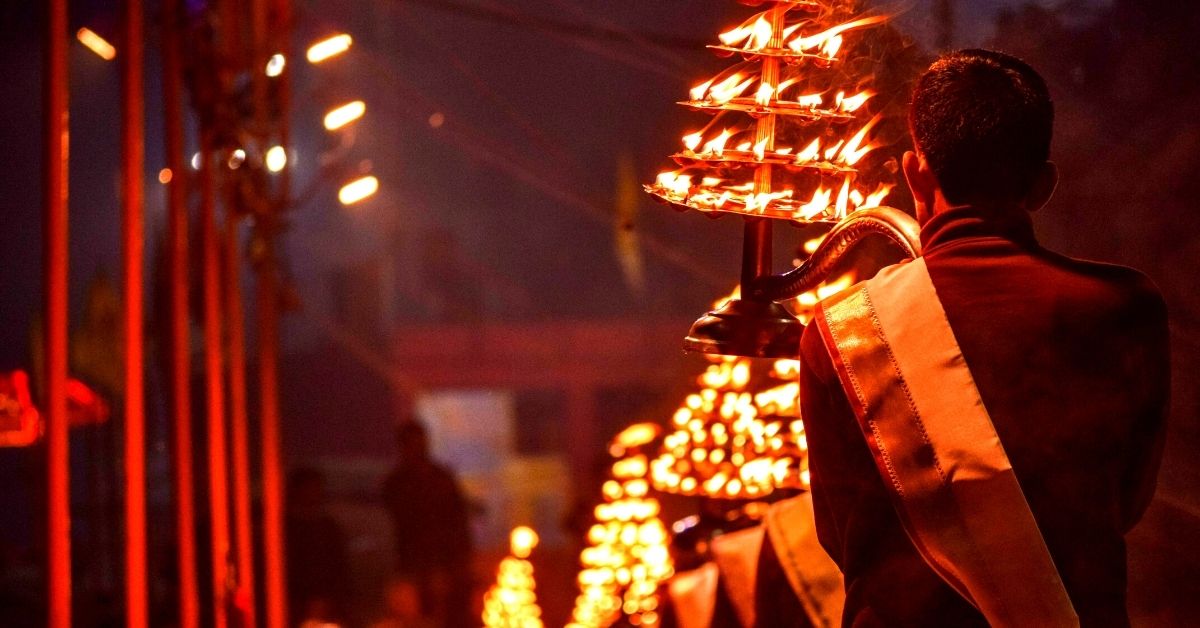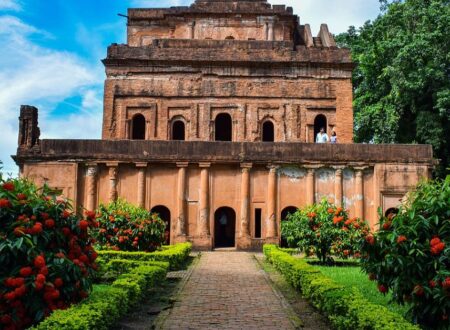The Hindus believe in reincarnation in Varanasi. Mythology says that humans are stuck in the cycle of rebirth which brings them into occasions of sadness. Moreover, the ultimate goal of human life, says Hinduism, should be to attain Moksha or Mukti. Moksha frees a human from the cycle of birth and rebirth, liberating them of the desire for materialistic needs and all the pain associated with them. This is one of the major reasons why the Hindus indulge in elaborate rituals or Vidhis, that last for days, after the death of a family member. These rituals are said to help the deceased attain Mukti.
Varanasi or Kashi is a place that is believed to open the gates of Moksha. It is said that if you die in this town, you will surely be free of the reincarnation cycle and be Mukt (free) of this materialistic world and all the pain it brings along.
History Of The Land Of Moksha

The land is deeply associated with religion as it is believed that it was founded by Lord Shiva himself. After a fight between Shiva and Brahma, where Shiva tore off one of Brahma’s five heads, he had to carry the slain adversary’s head as a sign of his own bravery. Lord Shiva, after the win, dishonored Brahma’s head by putting a bridle into his mouth and keeping it with him at all times. Once when Lord Shiva came to Varanasi, he accidentally dropped Brahma’s head and it disappeared on the ground. This is why the city is considered to be a holy site.
One of the oldest continuously inhabited cities in the world, Varanasi was one of the first major urban settlements in the Ganga valley. According to ancient scriptures that date back to the 2nd millennium BCE, Varanasi was the capital of religion and philosophy. The place was also a commercial and industrial center, well known for its muslin and silk fabrics, ivory artifacts, sculptures, and perfumes.
The city is also home to countless temples, shrines, and ghats that add to the religious significance of the place.
Moksha Bhavan: The Eerily Sacred Spot Of Varanasi

Touched by spirituality, this sacred city for the Hindus is one of the seven holy places (Sapta Puri) to die in. Devotees believe that dying here is a sure-shot way to attain Mukti. This is why the Moksha Bhavan in Varanasi was built. People from across the country come to Varanasi to die and attain Mukti. And spend their last few days in the Moksha Bhavan. Death is not an adversary here, it is the ultimate truth. And the people who check-in, in are ready to embrace it.
Housed inside an old red building, the Moksha Bhavan has 12 dimly lit rooms with minimum furnishing and bare essentials. The living people who check in to die in this guesthouse have exactly 2 weeks to embrace call of life. If death does not come to them in the given period, they are politely asked to be taken back home.
The Moksha Bhavan has seen tens of thousands of deaths. And every year, a thousand others come in here hoping to get a final victory over life and draw the last breath next to Ganga. It is sacred and an honor to die in Kashi.
The Burning Manikarnika Ghat

Near the Mukti Bhavan is the Manikarnika Ghat, a cremination gound on the ghat steps of the Ganga river. Those who attain Mukti in Varanasi’s Moksha Bhavan are cremated at the Manikarnika Ghat. On any given day and time, you will see funeral pyres burning and the families of the deceased biding them the final adieu with teary eyes.
Everything else takes the back seat when the philosophies of life and death come to the forefront. And you are bound to acknowledge every thought, every question, and every emotion that crosses you. It gets heavy and stoic to witness this, but there is also a sense of calm that is almost indescribable. The place is more like a place of liberation that rids you of your sins, than a place that just cremates the dead.
Hence, in Moksha Bhavan, and in Varanasi, death is celebrated while appreciating life. Moreover,just being there teaches the true essence of life and how death is not such a bad thing after all.
Follow India Chalk on Instagram for more amazing travel content. You can share your travel story with us. Reach out to us on email at contact[at]ndiachalk[dot]com. This blog is curated by India Chalk and written by Sushmita G.






